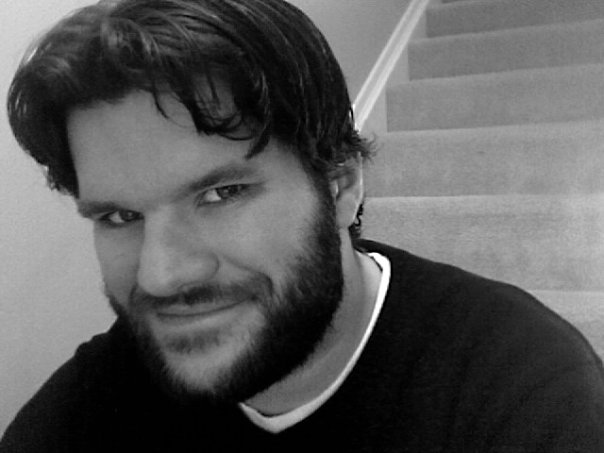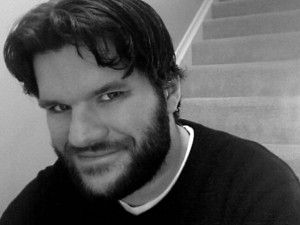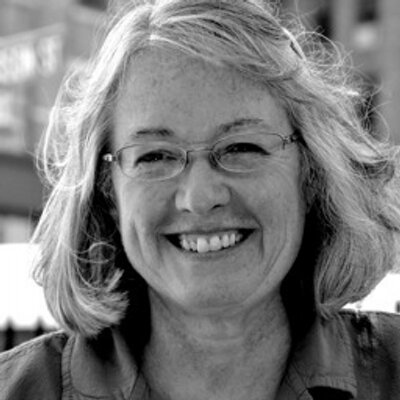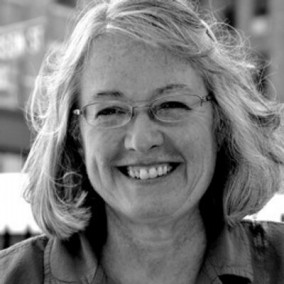 The Ladydrawers Comics Collective (AKA “The Ladydrawers”) describes themselves “an unofficially affiliated group of women, men, transgender, and non-binary gender folk who research, perform, and publish comics and texts about how economics, race, sexuality, and gender impact the comics industry, other media, and our culture at large.” The Dr. T.J. Eckleburg Review’s Liz Joynt Sandberg spoke with Ladydrawers collaborator Anne Elizabeth Moore about The Ladydrawers’ upcoming exhibit in Chicago, SEX. MONEY. RACE. GENDER.
The Ladydrawers Comics Collective (AKA “The Ladydrawers”) describes themselves “an unofficially affiliated group of women, men, transgender, and non-binary gender folk who research, perform, and publish comics and texts about how economics, race, sexuality, and gender impact the comics industry, other media, and our culture at large.” The Dr. T.J. Eckleburg Review’s Liz Joynt Sandberg spoke with Ladydrawers collaborator Anne Elizabeth Moore about The Ladydrawers’ upcoming exhibit in Chicago, SEX. MONEY. RACE. GENDER.
LJS: What led to the creation of S.M.R.G.? Did the exhibition or the workshops come first? Was it always a dual-component project?
AEM: SEX. MONEY. RACE. GENDER. The Ladydrawers (of Chicago, Ill.) is the first curatorial project The Ladydrawers have ever taken on. Last summer we had—I mean that was a little more me than this is, but last summer I decided to hold a session of the Adventure School for Ladies, which is an experimental graduate school I occasionally mismanage, and a few of the longer-standing Ladydrawers collaborators, once they got a handle on what an experimental graduate school was, worked on it pretty intently too. So when we were asked to apply for the A + D residency, we had this pretty wide set of things we’d done—pedagogical projects, performances, cultural interventions, standard lectures, online comics, book-making, posters, cat-petting—and we wanted to continue experimenting in those spaces between set modes of cultural production, in this curious and experimental collaborative manner.
LJS: There is a wonderfully diverse cast of artists participating in S.M.R.G. how did you amass the group of participants?
AEM: We work with a lot of folks around the country in various ways, so about half of the people involved are just people we like from previous projects and wanted to work with again. The other half came to us through an open call for work. Whenever we do a lecture or have a new strip out or do some kind of cultural intervention (last August we hand-delivered a set of sex-ed books and comics with our pals from Our Bodies, Ourselves to MO Rep. Todd Akin, for example) we have folks who just kind of fall in love with what we do, and this was our first wide-open chance to try to work with everyone we could. Our curators—Lucy Anaya, Gabriela Mendez, and Faina Stefadu—were really thoughtful and engaged with the work and the artists who submitted stuff to us. They were really appropriately and amazingly trusting, and I think it will pay off.
Some of it is also that I collect these amazing people who have a delightful tolerance for me when I ask them to do ridiculous stuff. So all the workshops are people I like that have something in common with each other doing something experimental and maybe even kind of dumb just to see what might happen. And those are all coming together in this intensely exciting way.
LJS: Your new interactive work Sentimental will be presented. How did you become interested in creating this work?
AEM: I was speaking at the Pop Culture and World Politics Conference last fall in Geneva New York, and one of the venues where we did stuff has this great print shop a friend of mine is involved in. He took me on a little tour in there one night before an event in the space and he was like, “and this is the printer on which the Declaration of Sentiments was printed in 1848.” The Women’s Rights Park in nearby Seneca Falls had deaccessioned it! And there it was, all ready to print. I’d been working in a historical vein for a few weeks before that, thinking about women’s suffrage and some great stuff Emma Goldman said about it, and another friend brought me to Seneca Falls a few days later on that same trip. It’s a strange place, with all this history that isn’t actually terribly well revered. I wrote about it for The Rumpus http://therumpus.net/2012/12/an-open-letter-to-the-womens-travel-auxiliary-of-seneca-falls-new-york/ but that didn’t cure me of this fascination, so Sentimental emerged, too. I’m going to be researching it as a Fellow at the Newberry Library this fall, too. I’m excited about this project.
LJS: What makes S.M.R.G. the right venue to present Sentimental?
AEM: The 1848 Declaration of Sentiments was, we all know, the founding document of the women’s rights movement in the US, but it was also a fairly natural outgrowth of the abolitionist movement. Men were there, at the meeting—Frederick Douglass among them. As such, it sort of marked the end of what we now, today, call intersectionality. 1848! When folks en mass believed, and acted on the belief, that their liberation was tied up in the liberation of others. After that, these capitalist notions that there’s really only enough liberation for a chosen few set in—that there just wasn’t enough pie to go around. The Ladydrawers spends a lot of time thinking about pie, and thinking about pie charts, and we feel pretty strongly that if there isn’t enough pie to go around you have to get more pie.
LJS: Lady Drawers seems like a community-driven outfit. Does S.M.R.G. feel like a natural next step/project? Has it stretched the group?
AEM: Well, Ladydrawers is definitely whoever’s around to answer the email. We run a pretty loose ship, so anything has the potential to be a next step. We had no idea we’d be called on to create a mobile sex-ed library for Missouri congress people, for example—we went by Claire McCaskill’s office, too—so it’s hard to predict what might comes next. There’s very little that can’t be improved by a group of giggly folks across the spectrum of gender identities willing to have adventures and make jokes about cats.
LJS: Comics, while 2 dimensional, pack a multi-faceted punch. How do you anticipate broadening the performative aspect of your work (considering Lyra Hill’s piece in particular) will further invite the audience to relate to the world and people around them?
AEM: Comics were originally an ephemeral medium—cheaply printed in pamphlets or newspapers, aimed at kids, none of this high-falutin’ graphic novel stuff we have today. And performance is one way to retain that sense that you can have this single engaging silly experience and even though it ends, it can still be important. But so are the installation projects, or the murals—all the work is based on that idea that we don’t have a ton of time together, whether it’s a single night or one person’s whole life. We may as well remake what we can of the world into something that makes us happy.
LJS: The Ladydrawers clearly communicates that you like/welcome everyone to participate. Are there challenges to welcoming everyone while still maintaining a safe space for participants?
AEM: Oh, for sure. Because we work in a pedagogical mode, our approach to safety’s a little haphazard. Nearly every one of our crew has been on the receiving end of some misogynist or transphobic or racist tirade at one point or another in the course of doing work with us. But these are sort of learning moments, as much as they suck to experience.
Apparently last weekend, for example, the documentary crew—we’re shooting a documentary—went to C2E2, a big mainstream comics convention here in Chicago. And they found a guy who was just spewing hateful, horrible stuff about women, and they asked if he was willing to talk to them on video. He was—apparently they didn’t even need to push him too much, he was just doing his shtick for the camera. And at the end they had him sign a release form, of course. And the release form says, basically: look, women make up a big part of the comics industry and we’re making a documentary about why people assume they don’t. Apparently this guy flipped. I was elsewhere at the time but one of our newer younger collaborators was left alone trying to convince this self-avowed misogynist to, basically, look like an ass on camera. And somehow she did it.
Even if that wasn’t a learning moment for him, although I’m willing to bet that it was, it was a learning moment for her. It would be great to avoid people who hate us all the time, but the truth is that sometimes we will have to deal with jerks, have to convince them to do something for us. Generally speaking, friendliness and openness works in most situations.
Of course, we draw the line a little bit differently when we’re choosing to bring people into the fold—who we want to see and work with and hang out with every day. Racist shit does not fly, nor other kinds of intolerance. But, like, if you’re open and friendly and curious, we’ll find a way to bring you in. You don’t even have to know how to draw, really. Although you do have to be willing to try.
LJS: How has the A+D Gallery supported S.M.R.G.?
AEM: They’re great. They invited us to do this residency and have set us up with all this stuff that’ll make it easy—catalog designers and poster deadlines—an organizational structure. Meg and Julianna there are amazing. But it’s a little more than that, too—like I’ll come in with some wacky idea that the crew’s worked out, like building a set from one of our comics there in the gallery or something. And I’ll be sort of presenting this idea as if, you know, they might hate it or think it’s frivolous or silly, but they’re always like, “Oh yeah! We can also …” and then building on the potentially silly idea. Part of that’s just art people, who are the only people in the world that actually trade in the ridiculous. But I think part of it is also that they kind believe in what we do and want to help us create the world that we envision.
LJS: Pretend you’re at opening night of S.M.R.G. What do you see and sense?
Art openings are strange beasts. The exhibition and the library with both be up, but I bet no one will even look at them because there will be so much else going on. A few of our interactive and installation works will be starting then, including Sentimental and Jacinta Bunnell’s Girls Will Be Boys coloring book pages. Elizabeth White’s Labor will be going up in the front window—a documentation, somehow, of our collective efforts in putting the show together. There is an ongoing mural project going up in one section of the gallery and an in-house comics project going on in another. We’ll have two of my favorite local comedians doing short sets, Ever Mainard and Katie McVay. That’s kind of a meta-joke, about comics. We’re hoping to have a reading series on the bathroom about trans identities and sexualities, and I’m hoping that will be incredibly uncomfortable for everyone. And we’ll have three performances. Lyra’s piece Go Down, which I’ve seen before and is very strange and great. Delia Jean’s Workout Woman, about labor and the food service industry. And Carolina Mayorga’s Maid in America. She’s going to be cleaning the gallery. Francis Kang, who’s shooting the documentary, will be there interviewing people. There will also be food, and probably fancy people milling around trying to look aloof, but I’m fairly certain the totally engaged awesome people who just want to hang out and do stuff together will outnumber them.
Finally, the Blizzard Babies will play the punk rock music. Up the punks! Up everybody.
SEX. MONEY. RACE. GENDER. opens June 27th (Opening Reception, 5-8PM) at A+D Gallery, Chicago. The exhibit will be available during regular gallery hours June 27-July 27, 2013. Visit A+D Gallery (http://www.colum.edu/ADGallery/index.php) for workshop listings, special events, and more. For more on The Ladydrawers, visit http://ladydrawers.wordpress.com.
Liz Joynt Sandberg is a jack of all trades who doesn’t care so much for the second part of that aphorism. She’s a writer, performer, student, hot dog enthusiast, and mother living in Chicago’s Andersonville neighborhood. Her dance and performance art works have been presented at Chicago’s Museum of Contemporary Art, Links Hall, Defibrillator Gallery, Chicago’s Dance Union and others. She is a columnist for Rebellious Magazine’s PLUCK! Parenting as well as a blog contributor for The Huffington Post. Sandberg studies and performs improvised comedy at iO Chicago and Second City, where she is delighted to currently be performing with Mother Talkers, and The Church of the Saturday Saints. She also performs sporadically as a standup comedian. Occasionally, she even makes dinner.



 Matt Bell is the author of
Matt Bell is the author of  MMR: “Dredge,” one that made my skin crawl and my heart ache, features a protagonist, Punter, who seems to be a combination of Norman Bates and the main character from Slingblade. The tension is severe, and the main character—despite all logic or events—is somehow still emotionally compelling and innocent. Then, in “Hold On to Your Vacuum,” you use metaphor to turn our all-too-human struggle inside out. The effect creates a disturbing dark comedy of self-reflection. In “Wolf Parts” and especially in “An Index Of How Our Family Was Killed,” you use a postmodern approach rather than conventional narrative. You’ve been published in over 70 literary magazines and included in best-of anthologies of mystery and fantasy. Do you love to experiment with form and style? Do you have a favorite, or does the story itself determine which form it will take?
MMR: “Dredge,” one that made my skin crawl and my heart ache, features a protagonist, Punter, who seems to be a combination of Norman Bates and the main character from Slingblade. The tension is severe, and the main character—despite all logic or events—is somehow still emotionally compelling and innocent. Then, in “Hold On to Your Vacuum,” you use metaphor to turn our all-too-human struggle inside out. The effect creates a disturbing dark comedy of self-reflection. In “Wolf Parts” and especially in “An Index Of How Our Family Was Killed,” you use a postmodern approach rather than conventional narrative. You’ve been published in over 70 literary magazines and included in best-of anthologies of mystery and fantasy. Do you love to experiment with form and style? Do you have a favorite, or does the story itself determine which form it will take? 


